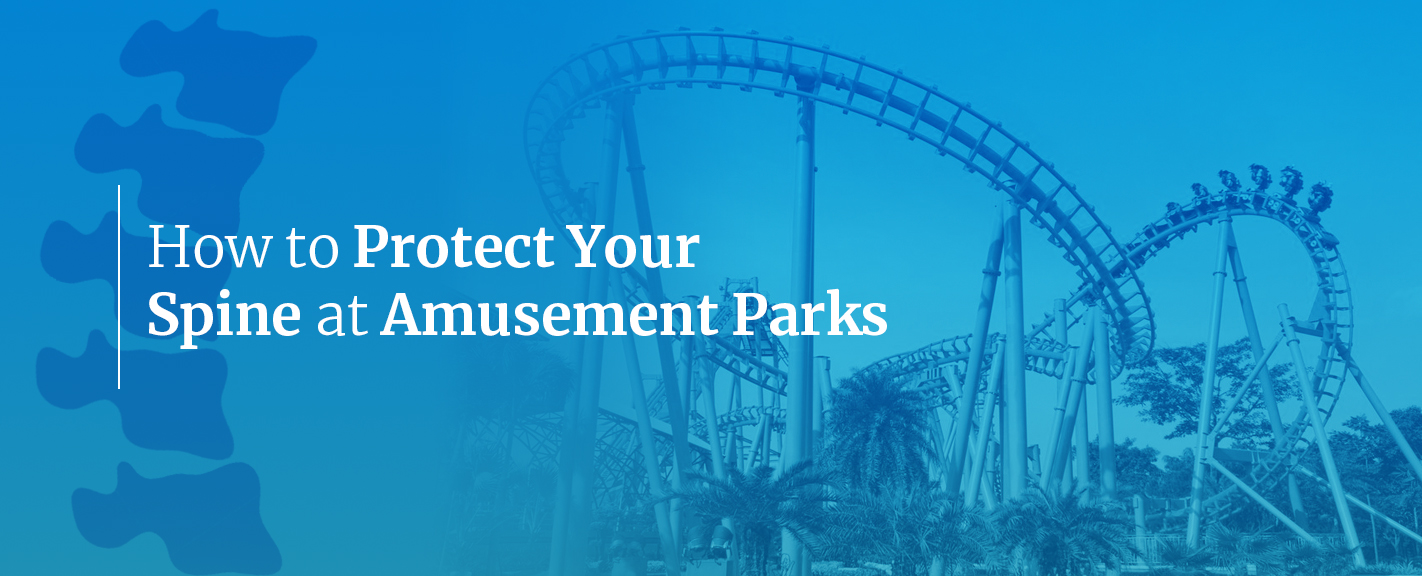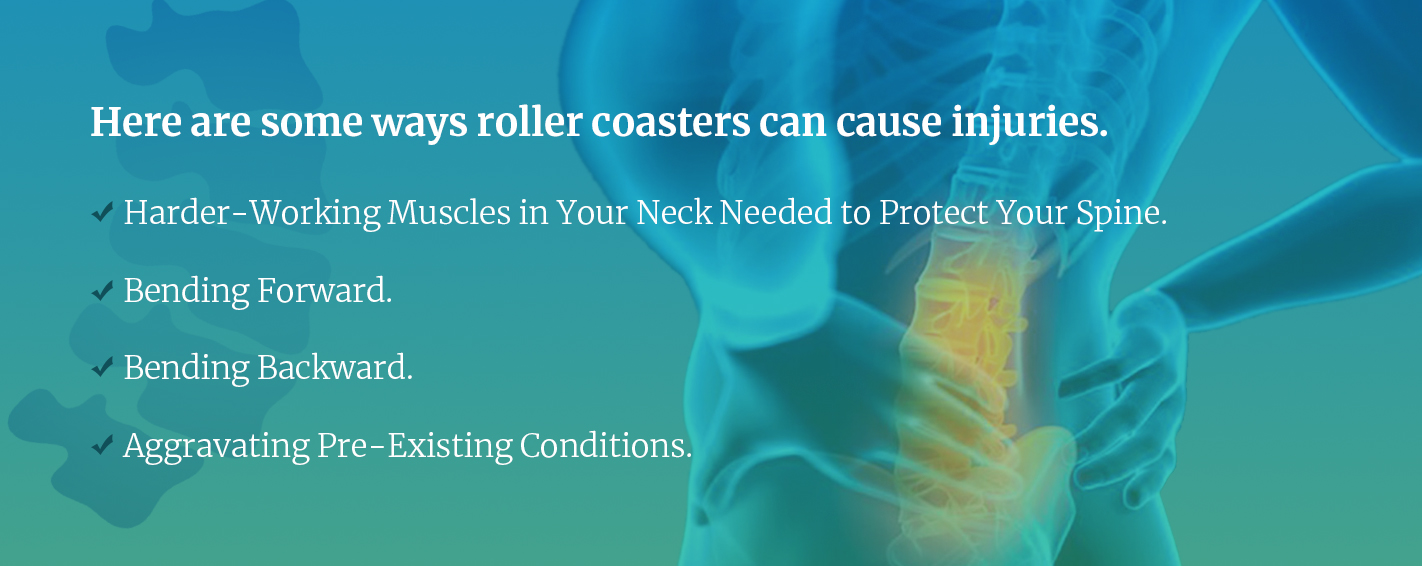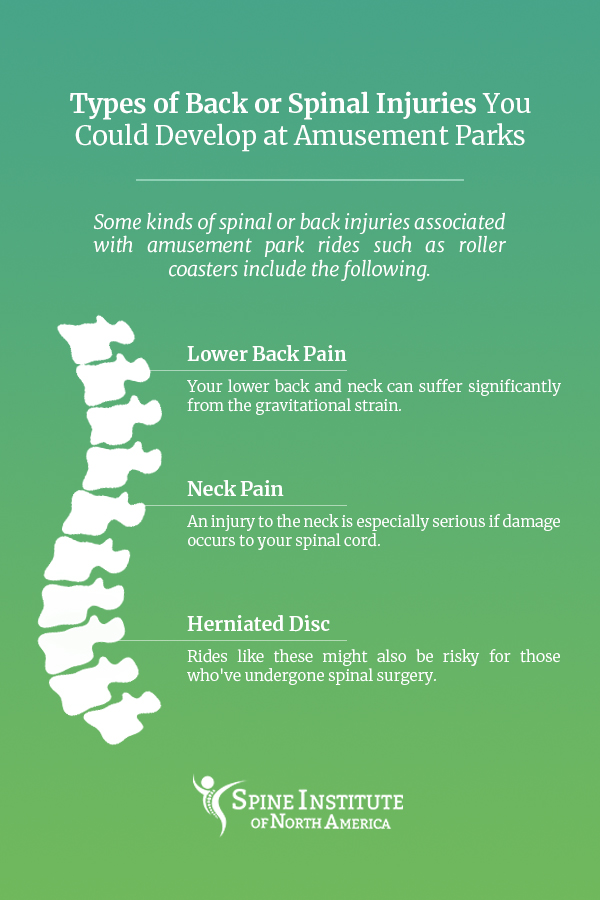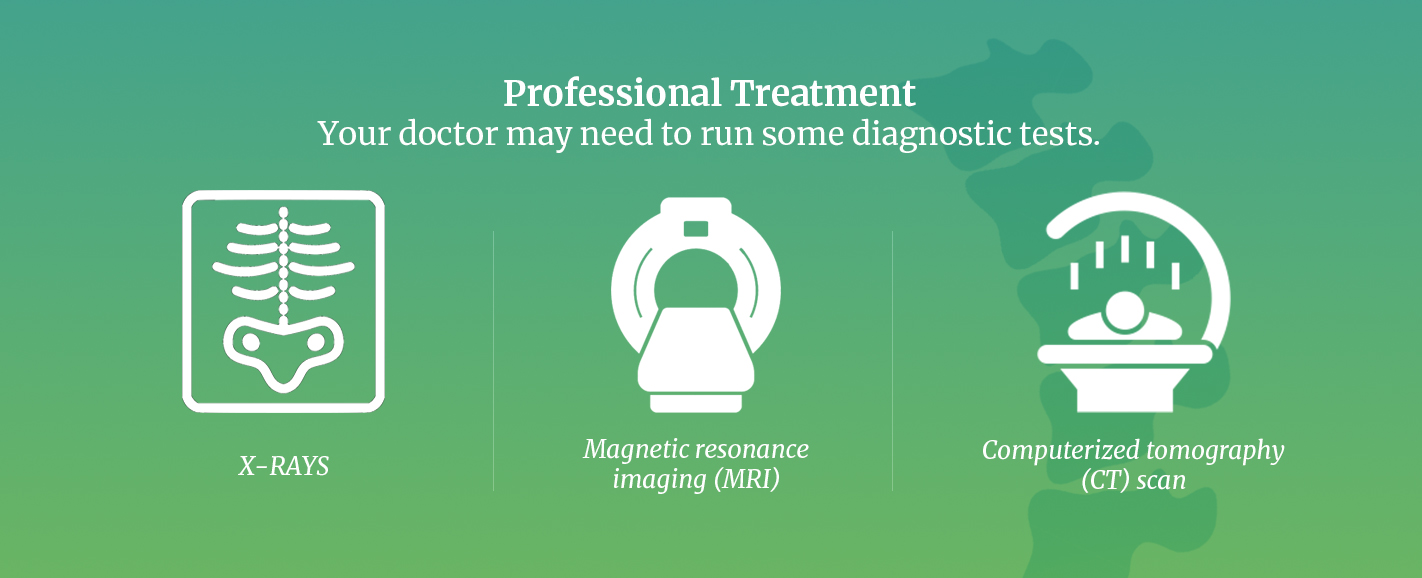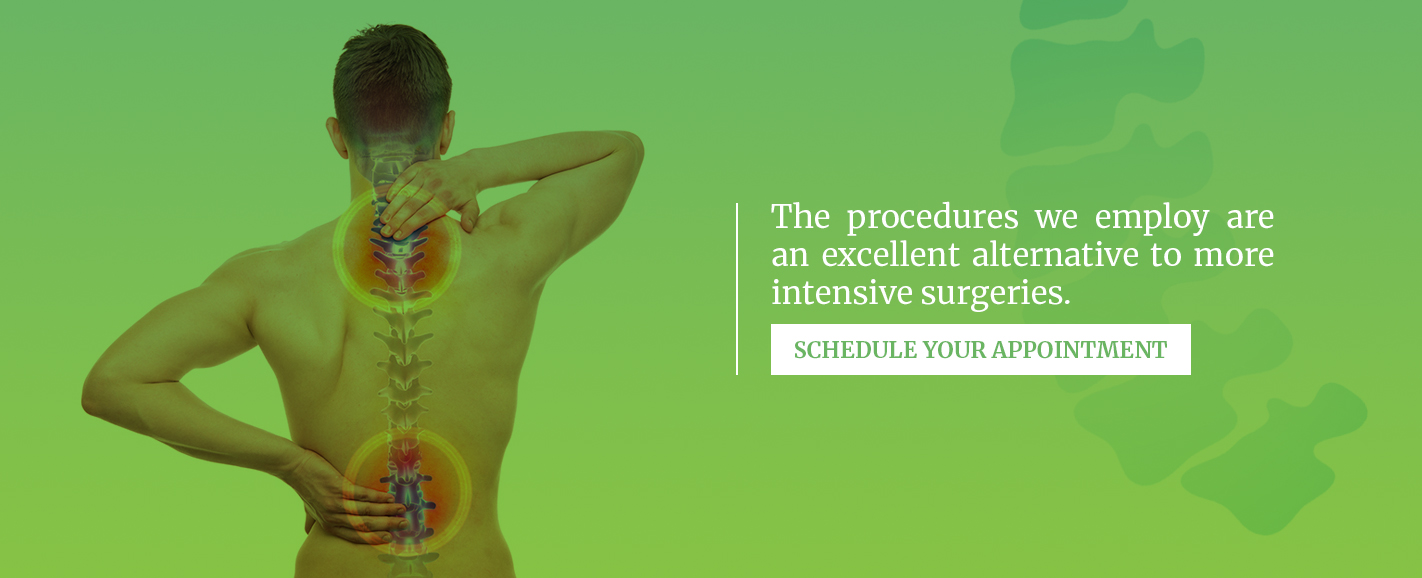This content was medically reviewed by Baher S. Yanni, MD, on May 22nd, 2019.
There’s nothing more thrilling than riding on a roller coaster, and the United States has some of the best worldwide. But, each year, amusement park rides, like roller coasters, cause thousands of injuries that range from bruises and cuts to head trauma to broken bones. They can even cause death.
To date, there are 898 roller coasters in North America. Some of the fastest roller coasters in America are:
- The Kingda Ka, at 128 miles per hour, located in New Jersey
- The Top Thrill Dragster, at 120 miles per hour, found in Ohio
- The Superman, at 100 miles per hour, residing in California
With how fast these speed demons can go and the extreme pressure, movement and force you subject your body to on rides like these, it only makes sense that they can create the potential for a back or spine injury. Let’s explore how roller coasters can cause injuries and how to protect your neck, spine and back at amusement parks.
How Roller Coasters Can Lead to Injuries
While riding a roller coaster is exciting, there’s nothing to look forward to about a back injury from a roller coaster ride. Back problems and roller coasters aren’t the only concern — there’s also trauma to muscles, bones, soft tissues and ligaments.
Here are some ways roller coasters can cause injuries.
1. Harder-Working Muscles in Your Neck Needed to Protect Your Spine
While you know you’re going to be fastened into your seat safely on a roller coaster, usually the seat belt or bar only restrains your torso. That means other parts of your body, like your legs, head and arms, are free to move around. And, even though your legs and arms only have the weight of your feet and hands to deal with, your neck has to hold up 10 to 11 pounds ― the average weight of a human head.
When you’re riding a roller coaster, it causes your body to move back and forth and your head to wobble. The muscles of your neck have to quickly adjust and compensate for these sudden movements to keep your head from bobbing around more than your spine can take.
2. Bending Forward
Forward flexion of your spine or bending forward, along with the rotation and twisting from sudden turns, raises backside pressure of your disc where your spinal canal is. Movements like these can cause pain, particularly if you have a history of disc problems. They can also cause disc herniation. Injuries in the forms of strains and slipped discs may become worse when you bend too much.
3. Bending Backward
Extension of your spine or bending backward puts extra force on your spinal joints. And, if you’ve previously injured your back, the ligaments and muscles in your back may still be healing or sensitive. They may become inflamed or irritated when you bend backward or forward.
4. Aggravating Pre-Existing Conditions
If you already have a problem like a herniated disc, the movements from roller coasters can cause pain and even lead to new injuries. If you’re struggling with arthritis, the pain from this condition can become worse due to the extension of your spine that occurs on roller coasters throwing you back and forth.
While the inherent nature of the ride can lead to these contributors to spinal injuries, other factors include mechanical ride errors and riders failing to obey or follow proper ride instructions.
Types of Back or Spinal Injuries You Could Develop at Amusement Parks
Some kinds of spinal or back injuries associated with amusement park rides such as roller coasters include the following.
1. Lower Back Pain
As mentioned, roller coasters toss your body around in different directions with extreme force. Your lower back and neck can suffer significantly from the gravitational strain. Typically, most amusement parks explicitly instruct people with back and neck problems to avoid roller coasters. However, it’s your responsibility to observe these precautions and consider the possibility of further complications or new injuries after riding one.
2. Neck Pain
Neck injuries from roller coasters can be minor or severe. An injury to the neck is especially serious if damage occurs to your spinal cord. Neck injuries occur when your head jerks backward and forward.
Sudden movements like these can cause whiplash, which is an injury to the soft tissues of the neck. Strains and sprains in your neck area cause stretching and tearing of your ligaments, and pain in your neck can occur several hours or several days after the ride. You should never ignore any symptoms that precede or accompany the pain. These symptoms often include:
- Severe dizziness
- Headache
- Neck stiffness
In extreme and rare cases, signs of depression could suggest neck strain. Symptoms could last for months or longer.
3. Herniated Disc
Several amusement park thrill rides across the country pose a danger, particularly for individuals with a history of neck or back injuries like herniated discs. Rides like these might also be risky for those who’ve undergone spinal surgery. Your body requires time to adjust to the motion’s force upon sudden acceleration, so it can figure out how your muscles need to react.
Forces can press you into your seat. However, they should be substantially less in the lateral directions to reduce stress on your back and neck. Even so, because of specific physical limitations or poor design, herniated discs do happen, particularly in individuals with prior spine injuries or surgeries or those with weak neck muscles.
How to Protect Your Spine at Amusement Parks
The thought of not being able to ride another roller coaster again can be a disheartening concept to grasp. Fortunately, you don’t have to stop riding roller coasters altogether to avoid potential damaging spine, neck or back pain. Your next step is to figure out how to protect your spine on roller coaster rides and how to relieve neck pain from roller coasters. Follow the steps below to stay safe and injury-free at the park.
1. Prepare Before You Visit the Amusement Park
You can decrease tension in your neck and back by performing some stretches in the days that lead up to your trip, as well as right before you get on the roller coaster. This tension often contributes to injury. When you loosen your tight muscles, it can decrease your chances of muscle spasms when your back gets exposed to rapid movement and force.
2. Read the Safety Warnings on Rides
There’s a reason for warnings on amusement park rides. If a sign tells you to avoid riding a particular ride if you have neck or back pain, it’s crucial you follow this advice to prevent making an existing injury worse. Many rides also warn people who are overweight not to go on the coaster. You risk hurting yourself if you don’t properly fit in the seat.
3. Use Safety Mechanisms
Roller coasters typically have metal bars you can grab to brace yourself when riding. Holding on to this metal bar will help lessen some of the force put on your back and spine. Be sure the attendant checks your harness or safety belt to see if it’s correctly tightened and fastened before the ride begins. Some parks allow you to try sitting in the seat during your wait in line to ensure they’re comfortable for you to ride in.
4. Pay Attention
When riding on a roller coaster, keep your eyes open so you can anticipate twists, turns and drops, and protect yourself when they occur. For instance, if you’re riding a coaster that goes faster than 30 miles per hour, you risk getting whiplash if you let your head snap back. Therefore, while riding these thrill rides, try to maintain your posture. Don’t lean forward, since it can cause an increase in pressure on your spinal disc.
Other ways to protect your spine are:
- Don’t ride a roller coaster while under the influence of alcohol or drugs.
- Drink plenty of water to stay hydrated all day during your visit.
- Ensure the seat in the roller coaster is comfortable before you ride it.
By ensuring you prepare yourself beforehand, you should be able to have a great day at the amusement park without having to worry about your spine or back.
If you are experiencing pain the day after visiting the amusement park, take some over-the-counter pain reliever, rest your back and ice the area to reduce pain and swelling. While most strains from roller coasters and other amusement park rides go away on their own after a couple of days, you could be experiencing a more severe back problem. If you are unable to alleviate your pain with self-care methods, see your doctor. They can determine where your back pain is coming from and decide on an appropriate treatment plan.
Treatment for Roller Coaster Spine Injuries
Treatment for back or spinal cord injury focuses on the prevention of further injury, so those with spinal cord or back injury can go back to a productive and active life.
At-Home Remedies
Cold packs and OTC anti-inflammatory medication often help alleviate swelling and pain in the short term. Sometimes, using a hot pain patch or applying a heating pad can do the trick to offer relief. But, if you continue to feel pain in your neck or back, you should seek professional care.
Professional Treatment
If you’re experiencing chronic pain in your spine or back from a roller coaster injury, don’t attempt to manage the pain by yourself. Your doctor may need to run some tests.
These tests may include one or more of the following.
- X-rays: Doctors generally order X-rays on individuals with suspected spinal cord or back injury after trauma. The X-rays can help the doctor reveal spinal column issues, degenerative changes in the spine, fractures or other types of injuries of the spine.
- Magnetic resonance imaging (MRI): These use radio waves and a strong magnetic field to generate computer images. An MRI is beneficial for viewing the spinal cord and finding blood clots, herniated discs or other masses that could be compressing the spinal cord.
- Computerized tomography (CT) scan: This type of scan provides the doctor with a better view of abnormalities they see on X-rays. A CT scan uses computers to generate a cross-sectional image series that can define disc, bone and other issues.
If you have a back or spinal cord injury, the doctor will likely refer you to a certified spinal injury center, like Metropolitan Pain & Spine Institute.
Doctors must draw on multiple disciplines to practice proper pain management. They also need to provide diagnosis, treatment and prevention plans. At Metropolitan Pain & Spine Institute, our physicians are leaders in the pain management field.
There are various pain management treatment plans available that include a variety of:
- Injections
- Medicines
- Less invasive procedures
- Therapies
- Surgeries
Types of procedures may include the following.
- Laminectomy: Laminectomy is a type of surgery where the surgeon removes the lamina, which is the back part of your vertebra covering your spinal canal, to create space. It’s also called decompression surgery. It relieves pressure on your spinal cord and nerves by enlarging your spinal canal.
- Spinal fusion: Spinal fusion is another type of surgery used for correcting an issue with your vertebrae. It’s a “welding” procedure where the surgeon fuses two or more vertebrae to allow them to heal into a solid, single bone.
- Microdiscectomy: During a microdiscectomy procedure, the surgeon uses minimally invasive methods to offer relief from pain a lumbar herniated disc causes. During the surgery, the surgeon takes out disc material under your nerve root or the small part of your bone over your nerve root.
Metropolitan Pain & Spine Institute Are Experts in Treating Spinal Injuries
Metropolitan Pain & Spine Institute incorporates a multidisciplinary approach of finding the source of your pain, then determining the best treatment plan for your situation. We may use testing to determine the cause of your pain and provide physical therapy and medicines to help manage it. We also employ the least invasive surgical procedures.
When you’re struggling with pain from a spinal injury, you might prefer a less invasive option of treatment. Although traditional types of spinal surgeries like spinal fusion, laminectomy and microdiscectomy do offer relief, they might also come with complications and lengthy recovery times. As an alternative, we might use endoscopic spine surgery — the least invasive option — to treat:
- Protruding discs
- Herniated discs
- Disc tears
- Bulging discs
- Extruded discs
- Irritation of spinal nerves
Contact Metropolitan Pain & Spine Institute for Your Consultation
Our goal at Metropolitan Pain & Spine Institute is to provide you with a less invasive treatment procedure before considering minimally invasive or traditional spine surgery. Individuals who don’t achieve enough pain relief from conservative treatments require surgery. However, spinal surgery shouldn’t be your first resort for pain relief because of its failure rates and lengthy recovery time.
Improved interventional spine technology and techniques allow us to treat common painful spine problems with less invasive options. The procedures we employ are an excellent alternative to more intensive surgeries. They’re just as effective at reducing painful conditions in some patients as traditional spinal surgery. Contact Metropolitan Pain & Spine Institute today to schedule your appointment for your consultation.
This content was medically reviewed by Baher Yanni, M.D, on May 22nd, 2019.
Sources:
https://www.statista.com/statistics/258912/roller-coasters-in-the-us-ranked-by-top-speed/
https://www.yahoo.com/lifestyle/fastest-roller-coasters-in-the-u-s-119442717302.html
https://www.reference.com/science/much-human-head-weigh-e88885d350f7b71b
https://www.themeparktourist.com/features/20181216/36416/fastest-roller-coasters-america
https://www.marcacohenspinecenter.com/four-tips-to-protect-your-spine-on-roller-coaster-rides/
https://www.marcacohenspinecenter.com/8-tips-to-prevent-back-pain-while-riding-roller-coasters/
https://health.clevelandclinic.org/roller-coasters-how-to-avoid-neck-and-back-pain/
https://www.thejoint.com/virginia/fairfax/greenbriar-10006/189329-spine-safety-on-roller-coasters
https://coastalorthopedics.com/roller-coasters-and-your-spine/
https://www.kos-spine.com/risks-roller-coasters-pose-spines/
https://www.grunge.com/45780/really-happens-body-roller-coaster/
https://biospine.com/prevent-back-pain-riding-roller-coasters/
